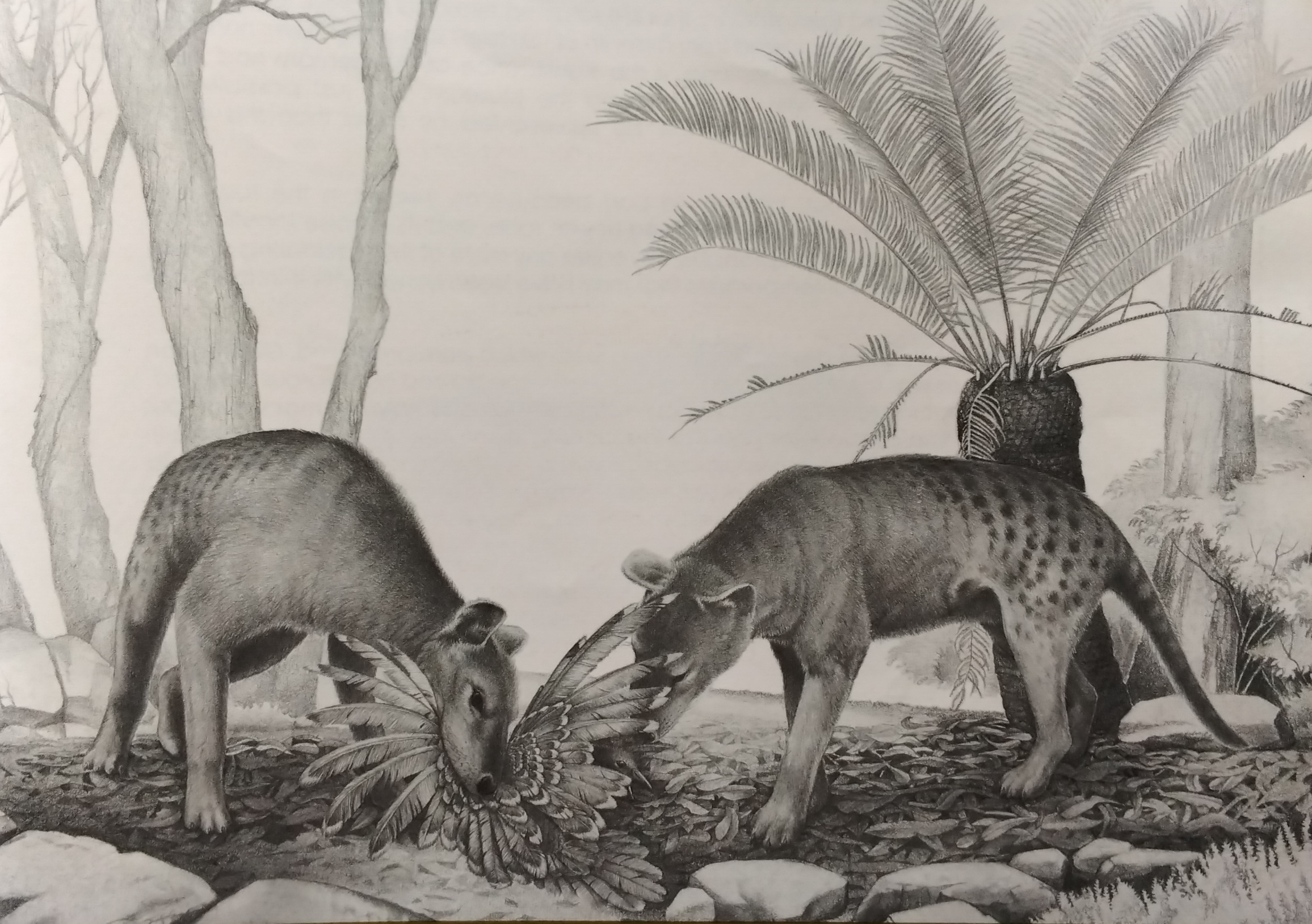Thylacinus Potens
| Thylacinus potens Temporal Range: Miocene to Pliocene | |
 | |
| Classification | |
| Class | Mammalia |
| Genus | Thylacinus |
| Species | potens |
| Fossil record | |
| Fossil range | Miocene to Pliocene |
Thylacinus potens was a prehistoric species of carnivorous marsupial native to Australia. It is considered the largest and most powerful member of the Thylacinidae family. Fossil evidence suggests it lived from approximately 4 to 10 million years ago, predating its well-known relative, the Tasmanian tiger (Thylacinus cynocephalus).
Discovery and Description
Fossils of T. potens have been found in the Northern Territory near Alice Springs. These remains include evidence of its strong teeth and muscular build, which made it well-adapted to hunting a variety of prey, including crocodiles, possums, and large herbivorous marsupials.
This species had a robust skull and shorter, broader head compared to the more recent Tasmanian tiger. Though not as specialized in cutting flesh, its teeth and jaw strength indicate it was a powerful predator capable of taking down large animals.
Evolutionary Significance
Thylacinus potens is thought to have been an ancestor of the Tasmanian tiger. The species highlights the evolutionary diversity of marsupial carnivores, with its fossils offering insights into the predatory habits and environmental adaptations of ancient Australia.
Extinction
The extinction of T. potens likely occurred around the same time as changes in Australia's climate and ecosystems during the Pliocene. By the time humans arrived, its closest relative, the Tasmanian tiger, had survived until the modern era but ultimately met the same fate.[1]
Classification
• Class: Mammalia
• Infraclass: Marsupialia
• Family: Thylacinidae
• Genus: Thylacinus
• Species: T. potens
